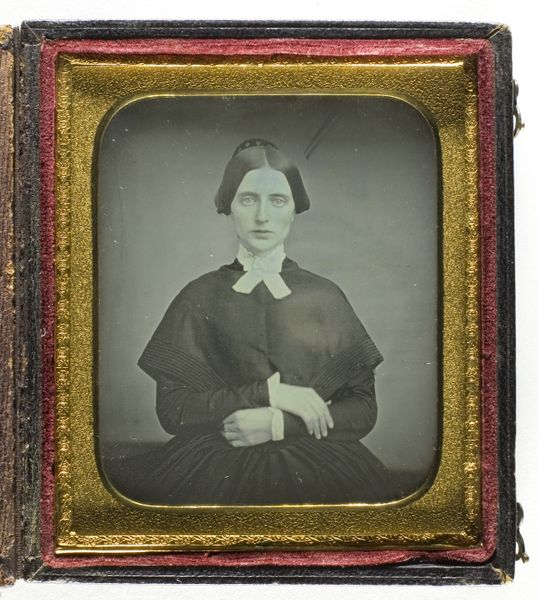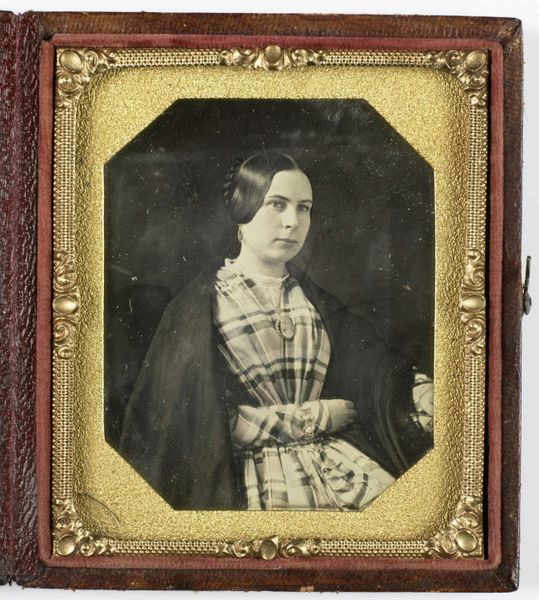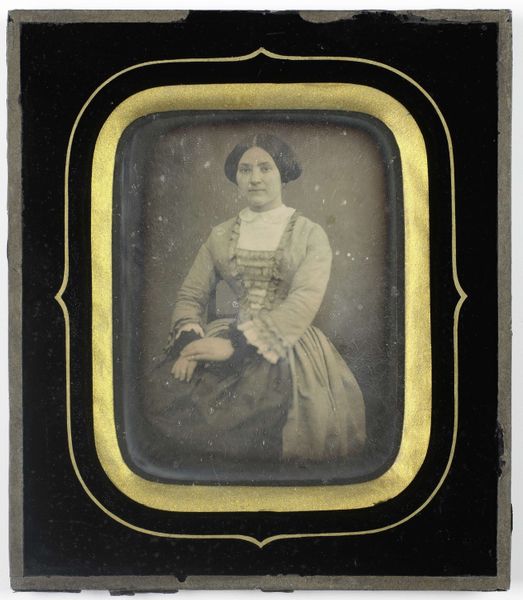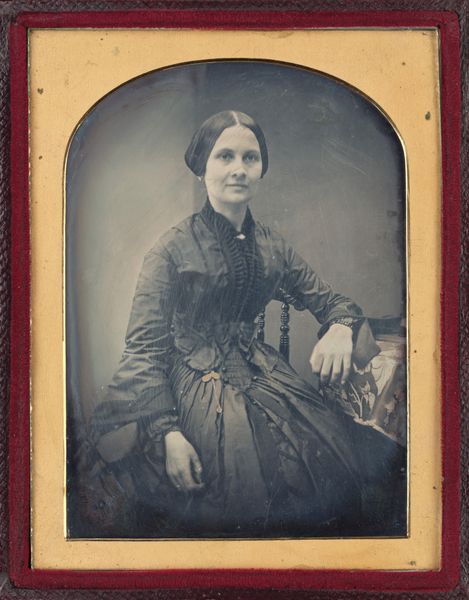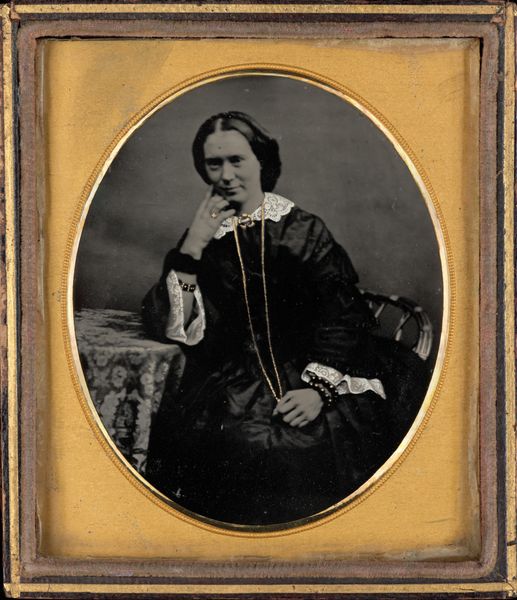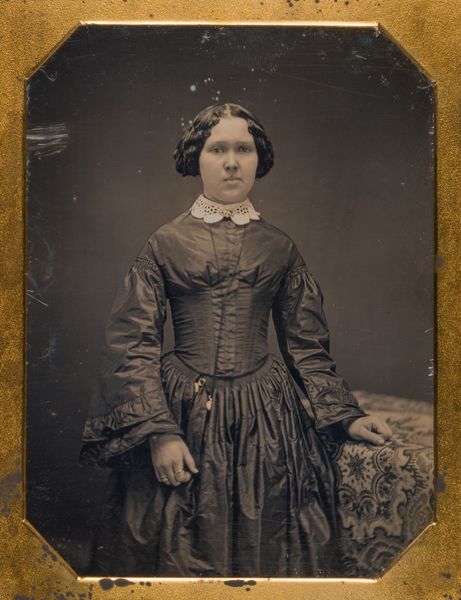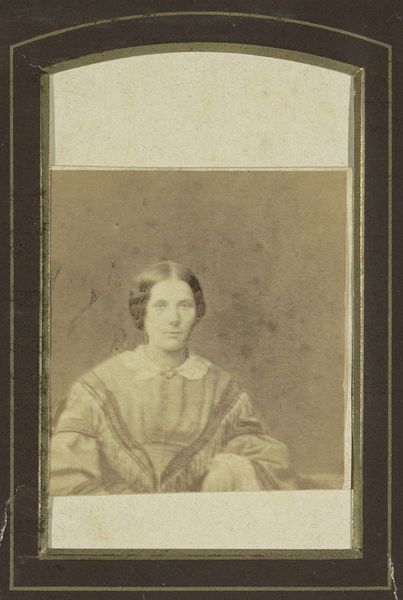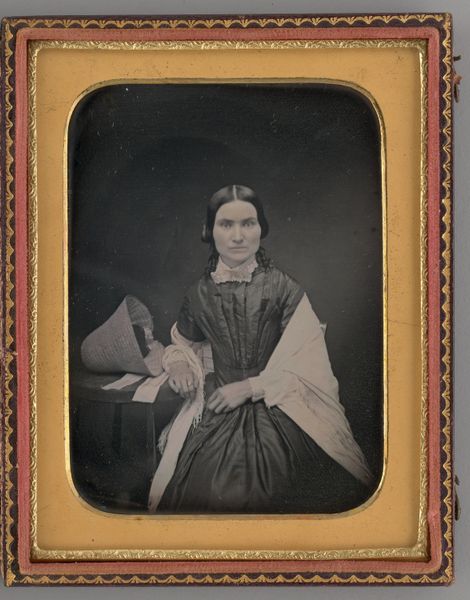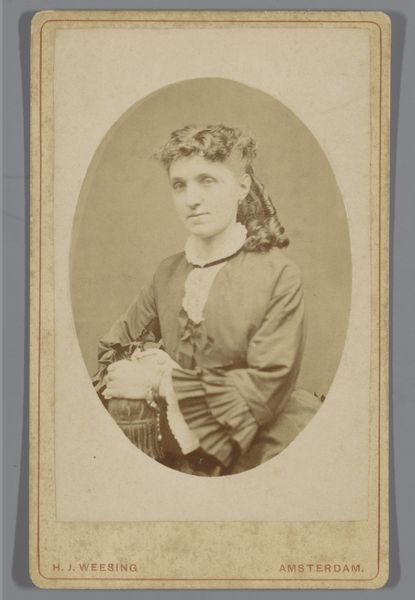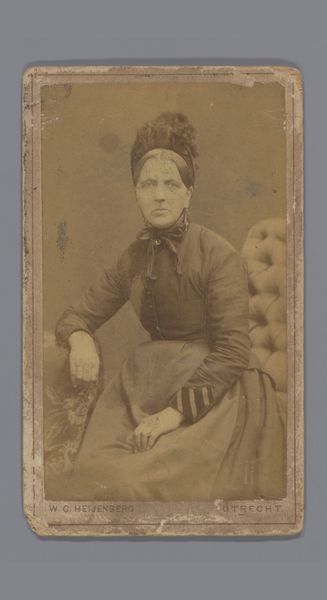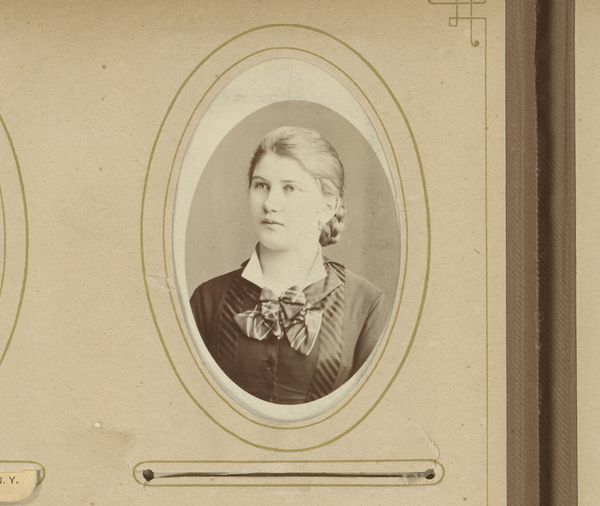
daguerreotype, photography, gelatin-silver-print, albumen-print
#
portrait
#
still-life-photography
#
daguerreotype
#
photography
#
intimism
#
coloured pencil
#
romanticism
#
gelatin-silver-print
#
watercolour illustration
#
watercolor
#
albumen-print
Dimensions: height 52 mm, width 39 mm, height 79 mm, width 60 mm, thickness 13 mm
Copyright: Rijks Museum: Open Domain
Editor: Here we have an interesting object—a daguerreotype portrait of an unknown young woman, dating from sometime between 1840 and 1860. What strikes me immediately is its diminutive scale and the subject’s rather melancholic gaze. What do you see when you look at this portrait? Curator: Focusing on its inherent qualities, consider the arrangement of tones. Notice how the subtle gradations from light to shadow sculpt her face. Observe how the diffuse background—likely a painted backdrop—enhances the contrast and thus, brings her forward into our space. Her dress, too, shows a structured arrangement of fabric. The careful use of light and shadow helps give texture to this relatively early photographic medium. Editor: So you're highlighting the composition and light rather than focusing on who she might be? Curator: Precisely. One must consider the compositional elements first. How does the arrangement of forms and light create meaning, irrespective of subject? Is there a symbolic meaning behind the precise geometry of the seating or the framing itself? Semiotics, for example, provides a framework. We might explore the oppositions at play—light/shadow, near/far, hard/soft. How might this enhance our appreciation? Editor: I hadn’t considered approaching it that way. I was too caught up in the identity of the sitter. Curator: The appeal is understandable. But, remember, it is in the carefully constructed arrangement of tones, textures, and forms that the artwork asserts itself as an object of formal contemplation. Close your eyes now, and imagine viewing her in greyscale. Now consider her features. How is the portrait organized in terms of light and darkness alone? What do you make of its chromatic architecture? Editor: I see. Analyzing it through that lens certainly pulls away from my narrative assumptions, revealing elements that might have escaped my eye before. Thank you for offering this perspective!
Comments
No comments
Be the first to comment and join the conversation on the ultimate creative platform.
